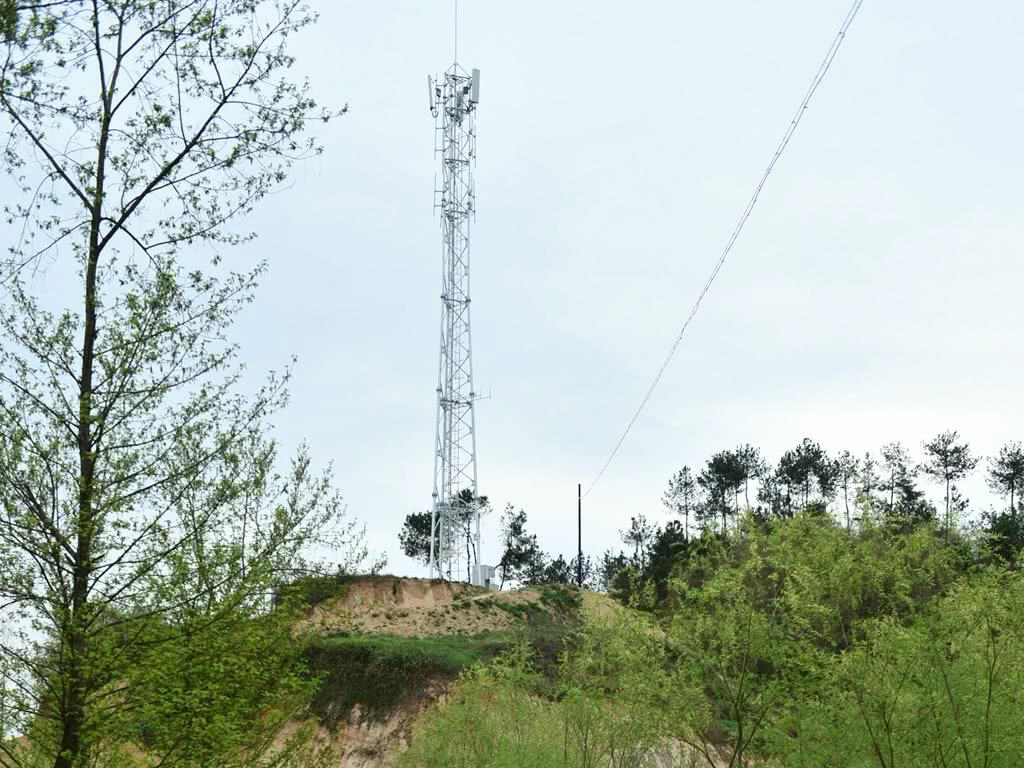Understand the Role of the Baseband Unit in 5G Compatibility
How 5G Compatibility Shapes Baseband Unit Selection
Moving toward 5G networks means operators need baseband units (BBUs) capable of handling multiple radio access technologies including 3G, 4G, and now 5G all on the same platform. According to recent industry reports from 2025 about how 5G is being rolled out across different regions, having these multi-mode capabilities helps cut down on duplicate equipment and makes it easier for networks to grow over time without major overhauls. Today's BBUs face quite a challenge though. They have to manage much wider channels than before, sometimes reaching up to 400 MHz in bandwidth. Plus they need to work with those big MIMO setups that can pack anywhere from 64 to even 256 antennas together. All this adds up to needing around ten times more computing power compared to what was required back in the days of 4G technology.
Key Components of a Baseband Unit (BBU) Enabling 5G Support
Essential components include:
- Multi-core processors for real-time signal modulation and demodulation
- eCPRI interfaces supporting fronthaul data rates up to 25Gbps
- Cloud-native software stacks enabling network slicing and latency optimization
These work together to meet 5G’s 1ms latency targets and support ultra-reliable low-latency communication (URLLC). Advanced BBUs also integrate AI-driven error correction, reducing signal distortion by up to 52% in high-interference environments.
Functional Splits in the Baseband Unit and Their Impact on Network Performance
The way 3GPP splits functions across different architectures (they call them Options 2 through 8) basically decides where most of the processing happens between those central units and the ones out at the edge. Take Split 7 for instance. This particular setup moves some of the physical layer work over to those remote radio units instead, which actually reduces what we need in terms of fronthaul bandwidth by about 60 percent. But there's a catch here too. The system needs much better timing coordination now, something around plus or minus 130 nanoseconds precision. And this matters quite a bit when deploying millimeter wave 5G networks in big cities packed with buildings and infrastructure.
Evaluate Deployment Architectures: D-RAN, C-RAN, and Open RAN
Distributed vs. Centralized RAN: Implications for Baseband Unit Deployment
The move from Distributed RAN (D-RAN) to Centralized RAN (C-RAN) fundamentally alters how Baseband Units handle signal processing tasks. With traditional D-RAN setups, each cell site hosts its own BBU equipment, which means operators face significantly increased maintenance work and power consumption expenses. Things look different when we switch to C-RAN architecture though. By consolidating those BBUs into central locations, network providers can cut down on site maintenance needs by around 40 percent according to Dell'Oro research from last year. Plus, this setup allows for smarter resource allocation between various radio units throughout the network. What does all this mean for hardware requirements? Well, modern BBUs need to support ultra-fast fronthaul connections with latency below 2 milliseconds and incorporate edge computing features if they want to keep up with today's demanding 5G service expectations.
Open RAN and Interoperability: The Future of Flexible Baseband Solutions
The Open RAN approach makes it possible for different vendors to work together thanks to standard interfaces like what we see in O-RAN's Open Fronthaul specification. According to some recent studies from folks working in applied sciences, network operators who implement open RAN baseband units (BBUs) tend to get new features out about 30 percent quicker than those stuck with closed systems. For all this flexibility to actually work though, these BBUs need to be compatible with specific 3GPP standards splits including options like 7-2x or 8. Early users are showing preference here too - around two thirds of them opt for combining both the O-DU and O-CU functions into one physical unit rather than keeping them separate.
Assess Control, Automation, and Management Capabilities
Control Plane Robustness in Baseband Unit Architecture
The control plane within a BBU plays a really important role when it comes to keeping things running smoothly in those latency sensitive 5G applications we see in industrial IoT setups and self-driving systems. When networks get busy during peak times, this component needs to handle all that signaling traffic properly while giving priority where needed. Most modern systems now include special hardware accelerators alongside solid error correction methods to make sure everything works as intended. Looking at actual field data, decentralized control approaches cut down on packet loss around 37% compared to older centralized models. That kind of improvement matters a lot for applications where even small delays could cause major problems or safety issues.
Automation and Orchestration Features for Intelligent BBU Management
Today's baseband units rely on automated systems that adjust resources according to what's happening with traffic at any given moment. This capability is really important for making 5G network slicing work properly. The orchestration platforms built into these systems actually use artificial intelligence to spot when networks might get backed up and then redirect data before problems happen. According to recent studies, this kind of smart routing cuts down on the need for people to manually fix things by around half. Plus, these same platforms handle firmware updates and other configuration tweaks much more smoothly than older methods did. They keep everything compatible with the latest 3GPP specifications without causing major disruptions to services customers depend on daily.
Ensure Scalability and Futureproofing in Baseband Unit Design
For modern 5G networks, baseband units (BBUs) need to perform well right from day one but also be able to adapt over time. The industry has really embraced scalable and modular designs lately because they work so well across different generations of technology. A recent study in 2024 actually showed something pretty interesting - systems built with parts that can swap out tend to cut down on overall costs by about 30% when compared to those stuck with fixed components. Most major equipment manufacturers are jumping on this bandwagon too. They're selling these modular BBU chassis that let operators upgrade piece by piece. Think things like throwing in some virtualized network functions (VNFs) or just swapping out older processors without having to rip everything apart and start fresh.
For 4G-to-5G transitions, adaptable BBU designs minimize service interruptions by preserving backward compatibility. Virtualized RAN (vRAN) architectures, for instance, allow software-defined upgrades to 5G New Radio (NR) while maintaining legacy LTE connectivity, avoiding costly “forklift upgrades” that contributed to 42% of deployment delays in 2023.
Making systems future ready really comes down to those seamless upgrade approaches where software gets updated right alongside regular maintenance checks and nobody even notices the downtime. The newer baseband units manage this trick with backup power sources, separate control and data paths, plus automatic failback systems when something goes wrong. Take a major telecom company in Europe for instance they managed to keep their network running at nearly flawless 99.999% availability while rolling out 5G in stages. They used these special cloud based management platforms that coordinate all the updates happening at different locations simultaneously. Not bad considering how complex modern networks have become.
Analyze Processor Technology and Cost Efficiency
Processor Options for BBUs: GPP, DSP, and SoC Trade-Offs
BBU performance depends heavily on processor choice, with three main types used in 5G deployments:
| Processor Type | Strengths | Limitations | Power Efficiency |
|---|---|---|---|
| GPP | Software flexibility | Higher latency | 35–45 W |
| DSP | Real-time signal processing | Fixed-function design | 18–28 W |
| SoC | Integrated hardware acceleration | Customization complexity | 22–32 W |
General-purpose processors (GPPs) allow rapid software updates but consume 38% more power than digital signal processors (DSPs) during beamforming tasks (2024 Mobile Networks Report). System-on-chip (SoC) solutions offer a balanced approach, delivering 12 TeraOPS/mm² for massive MIMO processing and reducing physical footprint by 60% compared to discrete implementations.
AI and Machine Learning in Baseband Signal Processing
AI-enhanced BBUs optimize resource allocation, reducing latency by 53% in dynamic traffic conditions. Machine learning models predict congestion with 89% accuracy, enabling proactive load distribution across virtualized BBU pools.
Total Cost of Ownership: Balancing Performance, Innovation, and Budget
Premium processors definitely come with a bigger price tag upfront, usually costing somewhere between 50 to 70 percent more than standard options. But what makes them worth considering is their impressive energy efficiency, which can save roughly eight dollars and twenty cents per watt each year in big operations. The modular design of baseband units has been game changing too. These systems last anywhere from eight to ten years because they allow for field upgrades through those FPGA modules plus regular software defined radio updates. According to research published by Deloitte back in 2023, telecom companies actually see returns on investment about 22 percent quicker when they time their hardware replacements with the 3GPP specification releases rather than going at random intervals.
FAQ Section
What is the role of a baseband unit (BBU) in 5G networks?
A baseband unit (BBU) in 5G networks is responsible for handling multiple radio access technologies including 3G, 4G, and 5G on a single platform. It manages wide bandwidth channels and supports massive MIMO configurations, requiring significant computational power.
How does the transition to C-RAN impact baseband units?
The transition to Centralized RAN (C-RAN) consolidates baseband units, reducing maintenance and power consumption costs. It enables smarter resource allocation, requiring baseband units to handle ultra-fast fronthaul connections and edge computing for optimal 5G service delivery.
What are the advantages of using Open RAN baseband units?
Open RAN baseband units allow different vendors to collaborate through standard interfaces, speeding up feature deployment compared to closed systems. These units need to comply with specific 3GPP standard splits for interoperability.
How does processor choice affect BBU performance?
BBU performance is heavily influenced by processor choice, with options like general-purpose processors (GPPs), digital signal processors (DSPs), and system-on-chip (SoC) solutions offering varying strengths, limitations, and power efficiencies.










